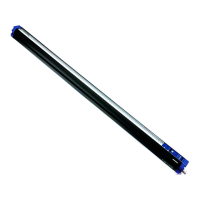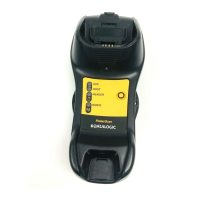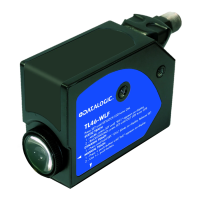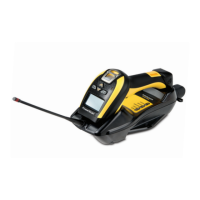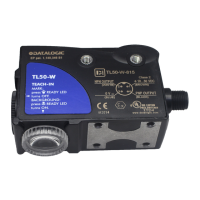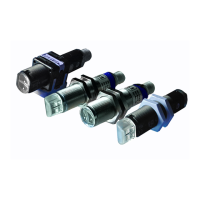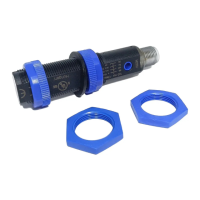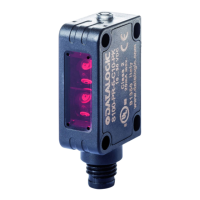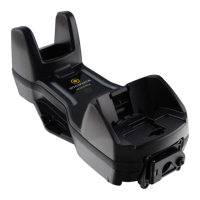5.3. Transition detection (number of transitions)
The transition detection counts the number of transitions in the detection area. The number of
transition increases each time that an object is detected inside the detection area and decreases each
time the objects remain outside (transition light->dark).
5.4. Notes on functioning mode
The DS2 light grids can configure the beam reference status, specifically selecting it from the user
interface. The default selection is “dark beam”, but the operator can select the complementary
situation i.e. “light beam”.
Not all the functions can be selected using dip-switches. Please refer to the following tables to
discover the local programmability of the device.
The analogue voltage value is supplied, in these cases, without direct correspondence, as
indicated in the tables found in page 12, 24 and 26.
The formula to determine the voltage is obtained with the following syntax:
V
OUT
=V
RES
* N
BEAM
[xxx ; yyy]
Where V
OUT
= voltage value of the analogue output
V
RES
= 10V/total n° of beams of the device = Voltage value corresponding to the
minimum resolution (obtained obscuring only one beam)
N
BEAM
[xxx ; yyy] = Number of beams belonging to the group [XY]
(i.e. between “xxx” beam and “yyy” beam)
Please note that the longer DS2 is, the less conditioning is V
RES.
In the worst case V
RES
= 43 mV !
(using the DS2 165 model)
5.5. Ethernet connection functioning
Output data updating is usually made at the end of each scanning cycle. This conditions enormously the
response time of the DS2 light grid, as it is depends data structure and information detail that has to be
transmitted. Some serial configuration commands have been added to make the device flexible to different
applications. The remote user interface completely controls these commands.
Transmission standard selection: Function allows the operator to choose data structure; it is possible to
choose ASCII or Binary data. Partial transmission is preferred for applications where time factors are
important. Further partial transmission is short protocol which transmission is purely binary and extremely
fast. Function is enable for single measure only. For data transmission details please see “Communication
protocol” section of the user manual.
Data sending mode selection: function allows the operator to choose when to send the data.
The sending can also be inhibited by a specific selection (via “software”, using the specific command, via
“hardware” programming the output enable input – pin 5 RX connector – using the user interface). The
sending mode selection can be reached only via remote control. Four options can be selected: data
sending at each machine cycle which is the default setting, data sending at each output status
change, data sending at analogue output value change, user sending request, using the interface
command button. This last condition can be requested also by an external command previously
programming the device (per details please see section 7 “Communication protocol”).
